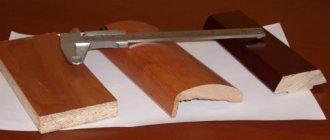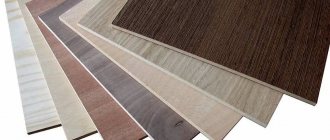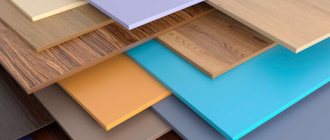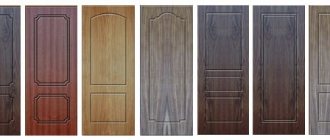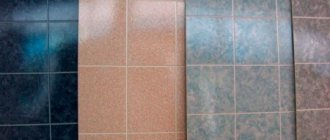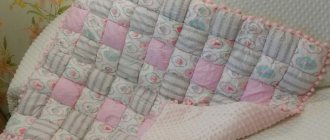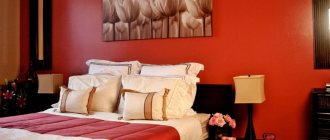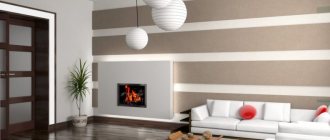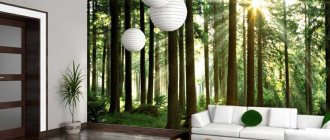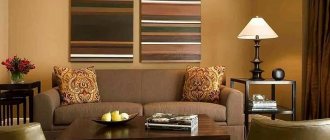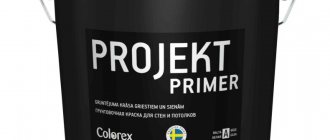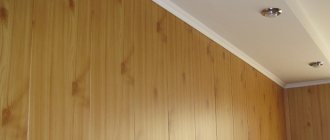MDF panels are a modern material based on small wood chips, compressed and bonded using synthetic resins. Low cost and excellent performance characteristics have made MDF popular among furniture makers and manufacturers of finishing materials.
Examples of panels based on fire-resistant MDF
Oak
- Nut
- Wenge
- Bamboo
To the panel catalog
Labeling, transportation and storage
A label is attached to each pack of slabs indicating:
- name of the country of origin;
- address of the manufacturer;
- name of the manufacturer;
- Name of product;
- designation of technical conditions;
- rules of transportation, storage and use;
- brand of slabs;
- slab dimensions, mm;
- emission class;
- number of slabs in a pack in pieces and m2;
- date of manufacture, change;
When transporting MDF boards, the boards must be protected from mechanical damage, rain and snow. Any transport is suitable for transporting solid pressed MDF boards, subject to the necessary rules for transporting goods. The slabs are stored indoors at a relative air humidity of no more than 70% and a temperature not higher than 25 0C.
Fire retardant varnishes: operating principle and how to choose the best option?
Wood remains a unique and sought-after construction and finishing material.
It has many advantages, but has a main drawback - low fire resistance.
To prevent fire, it is recommended to use fire-retardant wood varnish.
It is applied when installing structures or decorative elements made of natural boards, MDF, or when laying parquet.
Before work, it is important for the master to familiarize himself with information about the types of varnishes, the features of their choice, and the rules of application.
Application Certification
In accordance with the already mentioned features of MDF panels, their installation is not recommended in the following public places:
- schools, kindergartens, vocational schools, clinics, medical units, special outpatient clinics and hospitals;
- nursing homes, indoor theatres, clubs, circus grounds and buildings;
- libraries and exhibitions, museum buildings, premises for discos;
- and, finally, train stations, “Houses of Public Service,” as well as ticket offices, studios, postal service premises, laundries, and so on.
What types of fire-retardant varnishes are there and how to choose the best one
The fire retardant varnish must have a certificate. From the document you can learn about the effectiveness of the material according to GOST.
The standard identifies 3 fire resistance groups:
- high – in a fire, no more than 9% of the treated wood burns;
- average – the loss of tree weight will be more than 9%, but will not exceed 30%;
- low, suggests that fire could destroy more than 30% of treated structures.
The manufacturer must indicate information about the fire resistance of the varnish on the packaging. If the material has high or medium fire resistance, damaged areas of wood in small areas can be restored.
The protective material for wood changes after exposure to fire. Its surface swells into a charred foam or becomes glass-like. The charred layer is removed mechanically, the surface is carefully sanded, and varnish is applied again.
Use of wood materials
Solid wood boards have a unique structure and color. Special sawing and processing of the material, the use of one or a combination of several types of wood allow you to create a unique design in the premises.
Fire protection treatment of surfaces must be carried out taking into account the rule - the composition should not impair the external qualities of the material. Professional builders recommend using colorless fire retardant varnish.
Wooden surfaces after treatment with this composition acquire a “finished”, aesthetic appearance. They become smooth and glossy. Wood has protection not only from fire, but also from pollution and mechanical damage.
Choosing varnish for parquet and MDF
To make a room with a parquet floor safe, the board should be treated after installation. The coating will not guarantee complete protection from fire, but will reduce the risk of rapid fire spread several times.
Fire retardant varnish for parquet is usually chosen transparent. The floor covering requires high fire resistance of the product.
MDF panels are used for “rough” construction work - installing partitions, walls, installing built-in furniture, strengthening or leveling the floor.
To prevent fire, the surface of wood fiber boards is treated with fire retardants.
The structure of MDF is looser than that of natural wood, so for reliable protection against fire, a varnish with high and medium fire resistance is required.
How do fire retardant varnishes work?
Fire retardant varnishes for wood are divided into two groups. The main symptom for each is the reaction of the treated surface upon fire.
The first group combines materials that, after exposure to fire, acquire the ability to swell, that is, turn into non-flammable foam.
The formation of numerous bubbles occurs due to the thermolysis reaction - the rapid decomposition of the chemical base of the varnish.
The release of inert gases is observed, which prevent the flow of oxygen to the fire and its spread. The foam quickly chars and becomes hard.
Natural resins and salts are used for the base of varnishes. Non-flammable substances are added to them - the smallest quartz or basalt, limestone, magnesium carbonate.
Another group of varnishes is distinguished by its ability - with a significant increase in temperature, their surface becomes dense, glassy, and prevents the spread of combustion inside. The components impart these properties to the protective coating.
This is a liquid potassium silicate glassy base to which solid fillers are added. The composition may contain talc, quartz sand, mica, and clay.
How to apply varnish correctly
In order for fire-retardant varnish for floors and wooden walls to reliably protect them from fire, it is important to comply with the requirements for its application.
Since the varnish has a pronounced odor, it is necessary to provide access to fresh air into the room and turn on ventilation.
For high-quality drying of layers, the optimal temperature is about + 20 degrees with an air humidity of 70%. During work, protective equipment for the respiratory system and eyes is used.
After opening the container, you should evaluate the consistency of the product. If it is heterogeneous, it is necessary to thoroughly stir or filter the contents. Brushes, rollers or special sprayers are used for work.
Then surface preparation is carried out. There should be no areas with any dirt or dust on them.
Oil stains and traces of chemicals are thoroughly cleaned. Heat-resistant impregnation will not adhere well to damp, frozen wood, so it is important to evaluate the moisture content of the building material.
In order for a board or MDF to acquire an aesthetic appearance after impregnation, it will require mechanical cleaning and sanding, and puttying of noticeable irregularities. The thermal protective composition is applied in several layers - there must be at least 3 of them.
Wood acquires good protection through sequential processing in perpendicular directions - horizontal and vertical. After each application, the varnish should dry well.
The first layer will require at least 12 hours of drying, the next - 5-8 hours. The surface should not be sticky or with bubbles.
To evaluate how a fire-resistant substance will “behave” on wood, you need to test it on a small area. If the coating is smooth, lays down beautifully, and dries well, only then is it applied over the entire surface of the floor or wall.
Advantages and disadvantages of the material
Fireproof varnish for protecting wood from fires, when properly applied to the surface, reliably protects natural building materials from the occurrence and spread of fire. An additional quality of the product is its antiseptic effect.
It helps protect wood from the spread of mold, mildew, and rot. The fire retardant properties of the varnish last for a long time.
The next wood treatment will be required only after 5-10 years. The service life depends on the quality of the composition and the frequency of mechanical impact on the surface.
The product can be purchased glossy, matte or semi-matte. The choice depends on the design features of the room and the taste of its owners.
The only disadvantage of varnish for fire protection of wood and MDF panels is its high cost.
To achieve a high-quality result, it is necessary to apply the product to the entire surface in 3-4 layers, which involves a large consumption of fire-fighting composition.
Conclusion
The safety of people is the main requirement for premises of any type.
For fire protection purposes, wooden structures and decorative elements must be treated with a special varnish that prevents the rapid spread of fire.
The surfaces acquire a beautiful appearance and are not subject to destruction or mechanical wear.
Video: Fire retardant varnishes for wood, chipboard, fiberboard, laminate, plastic, metal, hardboard, cardboard, lining
Source: bezopasnostin.ru
MDF wall panel Kronostar Wall Street W048 Linen 2600x250 mm - characteristics and application
- G1 - low-flammable, self-extinguishing building materials. They do not burn on their own. During research, damage by weight is no more than 20%, along length - by a maximum of 65%. Flue gas temperature does not exceed 135℃.
- G2 - moderately flammable materials that do not support combustion. Without exposure to a direct fire source, they extinguish within 30 seconds. Smoke temperature - up to 235 ℃. Damage by weight cannot be more than 50%.
- G3 - normally combustible materials. They burn on their own for less than 5 minutes. No more than 50% of the sample mass is damaged. The maximum flue gas temperature rises to 450℃.
- G4 - highly flammable materials. Burn without exposure to a direct fire source for more than 5 minutes. The temperature of the flue gases exceeds 450 ℃, and the damage by weight is 50% or more.
Fire retardant varnishes for plywood, laminate, parquet flooring, MDF, hardboard, plastic, cardboard, veneer.
To treat wood against fire, fire, reduce the degree of flammability and prevent the spread of flame, fire-retardant impregnations and fire-retardant varnishes are used. Fire retardant varnishes for processing wood, floor boards, floorboards, parquet, MDF, plywood, laminate, hardboard, plastic and veneer are usually used if the surface being treated cannot absorb fire retardant impregnation and therefore the treatment and application of the fire retardant composition can only be carried out on the surface layer. Fire retardant varnish is also used if the surface has previously been painted with other paints or varnishes, or has a film coating such as, for example, a laminate or MDF board.
Fire retardant varnish is used to protect surfaces made of plywood, laminate, parquet flooring, MDF, hardboard, plastic, cardboard, veneer from fire when exposed to fire, flame, heating, etc. Fire retardant varnish is designed to reduce and reduce the flammability of wood and materials based on it (chipboard, fiberboard, parquet, MDF, laminate, plastic, cardboard, veneer, etc.), as well as to reduce the fire hazard of structures used inside and outside outdoors, depending on the brand of varnish chosen and its properties.
Classification of fire-retardant varnishes by purpose and place of treatment:
Fire retardant varnishes can be applied to various surfaces, i.e. they are often considered for processing and protection applications as:
- Fire retardant varnishes for treating escape routes;
- Fire retardant varnishes for plywood, OSB, chipboard and fiberboard;
- Fire retardant varnishes for floor boards, floorboards;
- Fire retardant varnishes for parquet;
- Fire retardant varnishes for MDF;
- Fire retardant varnishes for laminate, plastic, hardboard;
- Fire retardant varnishes for veneer and solid wood;
- Fire-retardant varnishes for decorative plastic products;
- Fire retardant varnishes for application to previously painted surfaces;
- Fire retardant varnish for application to paint or painted surfaces;
- Fire retardant varnishes for regular varnish and PVC panels.
We can offer you several types of fire-resistant and fire-retardant varnishes, which differ in properties, characteristics, application and operation features, as well as price. Our catalog contains fire-retardant varnishes that allow the surface treated with them to be provided with the FIRST GROUP OF FIRE-RESISTANT EFFECTIVENESS or have the protection characteristics KM-1 and KM-2. Choose the modification of the fire retardant composition or fire retardant varnish you need, go to the page with the technical characteristics of the product, where you can familiarize yourself in detail and find out its features, materials and surfaces on which it can be applied, the consumption of the fire retardant varnish, the conditions for its use, and also download a certificate for fire retardant varnish.
Fire retardant varnish for wood, floor boards and wall panels characteristics.
Fire retardant varnishes for wood, floorboards, laminate, plywood, wall panels and for treating many other surfaces may have the following characteristics:
- Wear-resistant fire retardant varnish. Fire retardant varnish with increased wear resistance and abrasion;
- Fire retardant varnish for application in winter, fire retardant varnish for processing at sub-zero temperatures down to -25C
- Fire retardant varnish, one-component;
- Fire retardant varnish two-component;
- Fire retardant varnish, quick drying;
- Fire retardant varnish on a polyurethane basis;
- Fire retardant alkyd urethane varnish;
- Fire retardant varnish on an organic basis;
- Fire retardant varnish for exterior use;
- Fire retardant varnish is waterproof, fire retardant varnish is moisture resistant;
- Fire retardant varnish without odor;
- Fire retardant varnish with low consumption per 1m2, fire retardant varnish with low consumption.
Tasks of wood fire protection
Fire destroys wood very quickly, so structures made from this material require reliable fire protection. This applies not only to wooden elements inside the building (stairs, walls and floors), but also to structures outside – for example, scaffolding and decking. Particular attention is paid to attic elements and roof structures, as well as fire escape routes and other important structural components where wood is present.
The main task of fire retardant treatment
- slowing down combustion, preventing the spread of fire, its localization. Skilled treatment will allow the building to resist fire for a period of time sufficient to evacuate people.
There is no point in saving when it comes to people’s lives and health. Responsibility for non-compliance with fire safety rules (FSR) is prescribed in the current legislative and regulatory documents of the Russian Federation and falls not only on the shoulders of the owners of the enterprise or owners of residential premises in the form of regulated punishment, but also on their conscience.
Federal Law No. 123 “Technical Regulations on Fire Safety Requirements.”
Fire retardant varnish KM-1, KM-2 and 1st group of fire protection and fire retardant efficiency according to GOST.
Fire retardant varnishes in accordance with GOST R 53292-2009 can provide 1 group of fire retardant efficiency. Fire retardant varnishes may have indicators and characteristics corresponding to KM-1 and KM-2. Fire retardant varnishes in accordance with GOST 30028.4-2006 can have effective bioprotective properties and qualities.
Fire-retardant varnish KM-1, KM-2 and 1st group of fire protection and fire-retardant efficiency according to GOST is one of the effective, economical and convenient means for treating surfaces made of various materials for fire protection purposes. Fire-retardant varnishes are usually used and applied to surfaces on which it is impossible or problematic to apply conventional fire-retardant antiseptics and obtain indicators KM-1, KM-2 or the first group of fire-retardant efficiency from the surface or material being protected because there is a film on the treated surface (laminate, hardboard, paint, etc.) or the properties of these materials are limited in terms of absorption of conventional fire retardant impregnation (veneer, cardboard, parquet, etc.) due to the specific structure of the sample (plastic, metal , PVC, laminate, MDF, OSB plywood, etc.), which must be protected from fire and the spread of flame in the event of a possible fire.
Choose a fire retardant varnish for laminate, parquet, floorboards, plywood, veneer, plastic, OSB and MDF panels.
Depending on the required degree of protection, the required resistance to fire or fire, the primary state of the surface being treated and to achieve the required fire retardant properties, you can choose the most suitable fire protection varnish in accordance with its certificate and instructions for use and application. For example, people often ask which fire-retardant varnish to choose if you need to treat laminate, parquet, plastic or floor boards:
- Stage floor boards and parquet in the assembly hall of a school, theater or museum must be treated with fire-retardant varnish with KM-1, KM-2 or 1st fire protection group. Is fire retardant varnish suitable for this purpose? There is a fire-retardant varnish that has increased wear resistance and does not wear out or wear out. This fire retardant varnish can be applied to wooden floors, parquet, and surfaces subject to a high degree of abrasion or mechanical stress. In appearance and many operational characteristics, wear-resistant fire-retardant floor varnish is practically no different from high-quality conventional polyurethane or alkyd-urethane varnish without fire-retardant functions, but it protects wood from fire, does not burn like conventional varnishes, does not spread flame, and has a fire protection class of KM -1 or KM-2 and fire retardant certificate and other supporting documents and approvals.
- Laminate, plywood, plastic, cardboard and veneer must be treated with fire-retardant varnish with protection indicators KM-1, KM-2 and fire protection group 1. Will it be possible to apply fire retardant varnish to laminate, MDF or laminated surfaces? In most cases, fire-retardant varnish can be used to treat plywood, laminate, MDF, veneer and similar other surfaces, because Fire protection varnish has good binding properties, providing it with reliable “adhesion” to the surface when applied and dried. To impart fire-retardant surface properties to laminated surfaces, MDF surfaces, plastics are treated with fire-retardant varnish with increased adhesion to the surface, because Many other fire retardant impregnations simply cannot adhere to them, do not absorb, run off or peel off. Fire retardant varnishes for laminate and MDF adhere quite reliably to these surfaces and reduce their flammability.
Fire retardant varnish certificate free download.
ALL fire-retardant varnishes presented in the product catalogue, non-flammable varnishes and fire-retardant varnishes have official certificates and conclusions that can be downloaded for review. Upon receipt of the fire-retardant varnish, you receive a certificate confirming that the fire-retardant varnish you have chosen provides the FIRST group of fire-retardant efficiency of the surface treated with it or that the fire-retardant varnish has a certificate and fire protection class KM-1 or KM-2.
FIRE-RESISTANT VARNISH certificate can be downloaded in the card of the fire-retardant varnish you have chosen. Go to the products in this category, select the fire retardant varnish you are interested in and familiarize yourself with its characteristics and certificates. When purchasing from us and paying for any Fire Retardant Varnish, you will receive a valid certificate and all the necessary documents for it.
Fire retardant varnish price in Moscow and the Russian Federation. Buy fire retardant varnish in Moscow and in the regions with delivery.
You can buy fire retardant varnish in Moscow with delivery throughout Russia by paying the invoice. When purchasing fire retardant varnish, the price for it does not change as long as the fire retardant varnish is in reserve for your order for the entire time specified in the invoice for its payment. From us you can get all the information you are interested in regarding how to choose and buy fire retardant varnish for processing plywood, laminate, parquet flooring, MDF, hardboard, plastic, cardboard, veneer, OSB panels and slabs, PVC and other materials. Call and find out the price of fire-retardant varnish, where to buy fire-retardant varnish, where fire-retardant fire-resistant varnish is available. The price for fireproof varnish is indicated as retail. The price of fire retardant varnish may vary depending on the quantity of delivery in the order, delivery time, payment method. Fire retardant varnish is available for shipment after payment in advance and agreed with the customer.
NOT sure how to make the RIGHT choice? Need HELP and professional advice?
CALL THE PROS NOW ! DO NOT RISK when choosing to protect your home! We work from 6.30 to 24.00. Seven days a week . Find out WHICH fire-retardant varnish will be most optimal for you in terms of price and quality, taking into account your tasks in protecting the surface.
Source: ecolak.ru
Fabric processing
A wide range of materials is offered for fire retardant treatment of fabric and carpet products. Methods of applying them can vary; the most convenient methods are those applied by spraying or soaking. It is important to emphasize that it is extremely important to pay attention to the fire protection of interior fabrics and floor materials such as carpet: in the event of a fire, the fire spreads through the fabrics at lightning speed. After special treatment, the fabric does not change its properties, does not lose color or other characteristics, but acquires pronounced fire resistance. You can treat fabrics, carpets, exhibition equipment, draperies and upholstered furniture at any convenient time, without removing them from the premises.
Since fire protection means have a different service life, the quality of fire protection must be periodically monitored with timely restoration work. The use of non-weather-resistant protective compounds is only possible for treating interior spaces.
Source: www.gorizontproject.ru
Fireproof MDF
7 products
Fire-resistant MDF is wood with anti-feather additives, thanks to which it perfectly meets all requirements for fire resistance and fire safety. It is often used in the manufacture of doors. You can select and order cutting of fire-resistant MDF on our website, having familiarized yourself with the assortment
Address
Russia, Moscow region, Balashikha, st. Vladimirskaya, 61
Operating mode
from 09:00 to 18:00 lunch from 13:00 to 14:00
Fill out the form and our specialists will contact you shortly.
Why should fire retardant wood treatment in Moscow be ordered from specialists?
Large residential and industrial buildings and complexes are subject to strict fire safety requirements. Therefore, fire protection treatment for them must be carried out by certified specialists. Our company has a license from the Ministry of Emergency Situations to carry out work on fireproofing of wooden structures, as well as its own production and testing laboratory.
We are absolutely sure that the price of neglect of fire requirements, various errors in the design and processing of structures is the price of life.
We will develop the optimal technical solution to reduce your costs.
We will carry out fire retardant treatment on a turnkey basis without involving third-party specialists.
– Positive conclusion of the Ministry of Emergency Situations:
We will receive a conclusion from the Federal State Budgetary Institution VNIIPPO EMERCOM of the Russian Federation or the Federal State Budgetary Institution SEC FPS for your facility.
Privacy Policy
General provisions
Some objects posted on the site are the intellectual property of the company “Plywood 003.RU - buy plywood, MDF, laminated chipboard, chipboard wholesale and retail.” The use of such objects is established by the current legislation of the Russian Federation.
On the website “Plywood 003.RU - buy plywood, MDF, laminated chipboard, chipboard wholesale and retail” there are links that allow you to go to other sites. The company “Plywood 003.RU - buy plywood, MDF, chipboard, chipboard wholesale and retail” is not responsible for the information published on these sites and provides links to them only to ensure convenience for visitors to its site.
Personal information and security
The company “Plywood 003.RU - buy plywood, MDF, laminated chipboard, chipboard wholesale and retail” guarantees that no information received from you will ever be provided to third parties under any circumstances, except as provided for by the current legislation of the Russian Federation.
In certain circumstances, the company “Plywood 003.RU - buy plywood, MDF, laminated chipboard, chipboard wholesale and retail” may ask you to register and provide personal information. The information provided is used solely for official purposes, as well as to provide access to special information.
Personal information can be changed, updated or deleted at any time under “Account” > “Profile”.
In order to provide you with information of a certain kind, the company “Plywood 003.RU - buy plywood, MDF, laminated chipboard, chipboard wholesale and retail”, with your explicit consent, may send information messages to the email address specified during registration. At any time you can change the subject of such mailings or refuse it.
Like many other sites, “Plywood 003.RU - buy plywood, MDF, laminated chipboard, chipboard wholesale and retail” uses cookie technology, which can be used to promote our product and measure the effectiveness of advertising. In addition, with the help of this technology, “Plywood 003.RU - buy plywood, MDF, laminated chipboard, chipboard wholesale and retail” is set up to work personally with you. In particular, without this technology it is impossible to work with authorization in the control panel.
The information on this website is for informational purposes only and is subject to any changes without any prior notice.
To opt out of further communications with our company, change or delete your personal information, write to us via the feedback form
How to treat MDF from moisture?
If MDF surfaces have to constantly come into contact with water, then this can have a very detrimental effect on them. Therefore, before covering something with MDF, you should think about whether this material needs additional protection.
You can protect MDF from moisture using various means. Drying oils, such as PVA glue and vinyl film, have proven themselves to be good for these purposes. Let's consider each of the above methods for treating MDF from moisture.
Protecting MDF with drying oil
Perhaps the most inexpensive way to treat MDF so that the boards do not rot during use is to apply drying oil to their surface. It would be advisable to note that this method of protection is applicable only in cases where MDF is used as flooring for leveling floors.
In this case, special attention is paid to the ends of the MDF and the seams between them. It is better to treat these areas with drying oil several times, since they will absorb it very well.
Processing MDF with PVA glue
Protecting MDF with PVA glue is applicable precisely in cases where the ceiling or walls are sheathed with slabs. It is a known fact that PVA glue has good performance in terms of water resistance and reinforcement. Therefore, MDF panels treated with PVA glue last much longer.
As with the first method of protection, PVA glue is applied to MDF with a brush in one or two layers. Before applying glue, dust and other contaminants should be removed from the surface of the boards so as not to disrupt the adhesion of the materials.
Features of wood fiber panels
The building materials market is saturated with many types of fire-resistant (fire-resistant) wall panels. From the point of view of fire protection, MDF products are of particular interest, quite often used as elements of decorative finishing of ceilings and walls.
Unlike plastic products, they are made from natural material and have a more natural woody tone. The abbreviation “MDF” means the same as wood-fiber chipboard materials, but with a different set of binding components.
Instead of resins and phenols that are hazardous to humans, these fire-resistant products use non-flammable fillers such as paraffin or lignin.
In addition, the composition of fire-resistant MDF panels includes wood dust formed from sawdust, which, after pressing, is subjected to special heat treatment.
After the compressed and heated material has cooled, it is cut into pieces of the required size, which are subsequently covered with a melamine film “like wood”.
According to the fire certificate for MDF panels, these materials can differ greatly in their flammability (have classes corresponding to this indicator, designated as KM1-KM5). At the same time, finishing products with indicators KM1 and KM2 are classified as non-combustible.
This division also means that MDF panels with classes KM3-KM5 are not allowed to be mounted on structural elements located in close proximity to heating boilers, stoves and fireplaces.
When installing them, the distance from the heating source must be at least one meter. If there are special screens or barriers made of fire-resistant materials, the specified distance is reduced to 25 cm.
